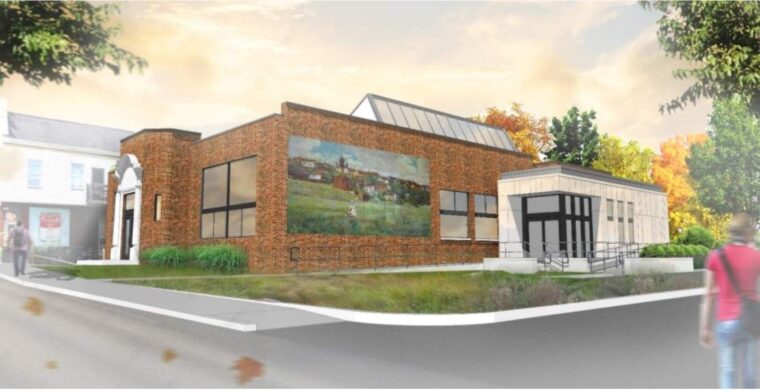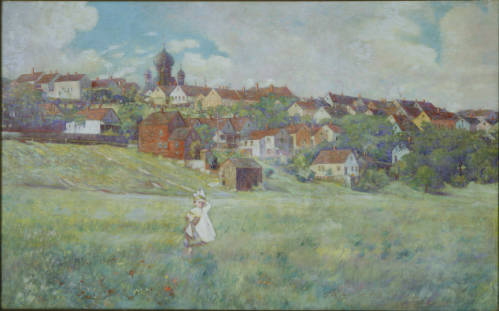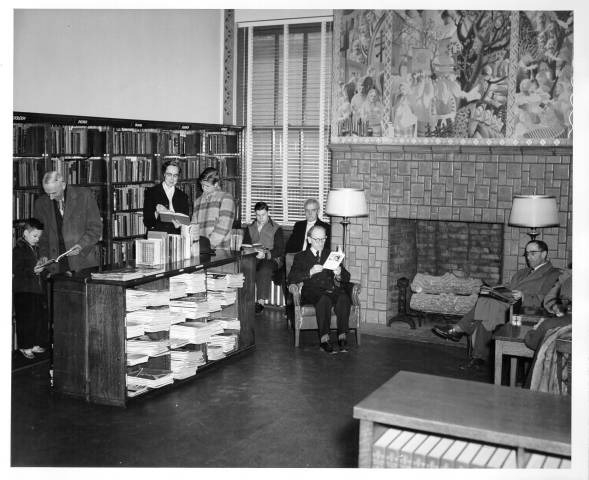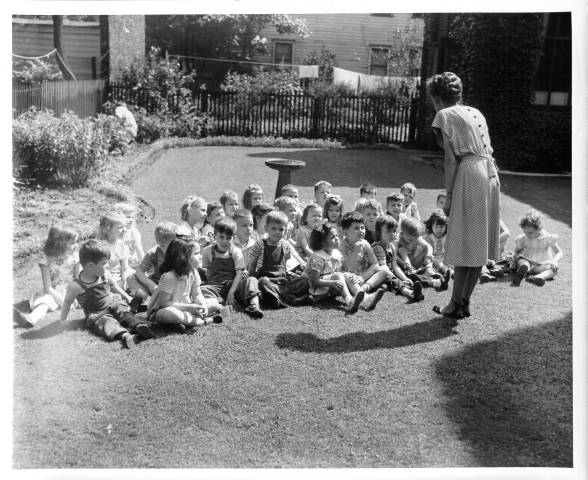Empowering the Community at Jefferson Branch
If we could travel back in time to visit the Tremont neighborhood of 100 years ago, we’d find bustling streets filled with steel mill workers, other laborers, and a growing immigrant population. Within this vibrant community stood Cleveland Public Library’s Jefferson Branch, which opened in 1918 in a Carnegie conversion building—a space designed with the […]


If we could travel back in time to visit the Tremont neighborhood of 100 years ago, we’d find bustling streets filled with steel mill workers, other laborers, and a growing immigrant population. Within this vibrant community stood Cleveland Public Library’s Jefferson Branch, which opened in 1918 in a Carnegie conversion building—a space designed with the possibility of one day being converted for industrial or retail use. While this building ultimately remained a library, the branch is now, all these years later, transforming to serve library patrons today and into the future.
Renowned Cleveland architect and artist Ora Coltman served as the architect for the branch. (Coltman’s painting, Little Russia, Cleveland, along with a Paliwoda mural, have been longstanding artistic features of the library.) While Jefferson Branch was last renovated in 1981, the Library’s system-wide Facilities Master Plan has bigger changes in store for this historic neighborhood library.

This mural in Jefferson Branch depicts the movement of immigrants into the industrial workforce of America. Paliwoda lived in Tremont and worked as a page at Jefferson Branch as a student. He joined Walt Disney Studios in 1935, where he worked as an animator on Snow White, Pinocchio, Fantasia, Bambi, Cinderella, Alice in Wonderland, and 101 Dalmatians. 
This painting, which hangs in Jefferson Branch, was a gift from Ora Coltman, the building’s architect. The child in the foreground was modeled from a photograph of Coltman’s granddaughter, Alice.
“We’re excited to get a refresh,” says Branch Manager Steve Capuozzo. “It will be nice to have a thoughtfully and well-designed space that’s adaptable with more seating, quiet study rooms, and a larger children’s space.”
Capuozzo describes Jefferson as a friendly neighborhood branch located in an eclectic, walkable neighborhood. The branch serves longtime regular patrons, newer residents, voracious readers, and plenty of children. Nearby schools send classes to the library for visits (in non-pandemic times, that is), and staff at Jefferson provide many meals to children in the community through the Library’s partnership with the Greater Cleveland Food Bank.
“It’s a small place, but it’s lively,” Capuozzo says.
Jefferson is, in fact, one of the smaller branches in the Cleveland Public Library system. Based in part on space limitations, the renovations in store for the building are not quite as dramatic as the changes some of the other branches will experience—but the new vision for Jefferson will make an impact regardless.
Equal Access for All
While the building’s footprint doesn’t allow for a major expansion, the branch will receive an increase of about 500 square feet (supplementing its current square footage of 6,900) with the introduction of a modest addition. This addition will make room for a 24-hour vestibule with book lockers, a second branch entrance, and an expanded staff area. Moving the staff area to the addition will free up more space inside the historic branch for patrons to enjoy.
Renovation plans also include accessible, gender-inclusive restrooms; a circulation desk reestablished in the center of the branch; a window-facing laptop bar; a preserved and updated original entrance; small meeting rooms; new sliding doors for the conference room to improve access; a larger children’s area; and a teen nook, where Capuozzo hopes to set up video game equipment.
These improvements were designed by a team at Williams Architects with years of experience working in the library world. Nancy Thomas Weir, AIA, Senior Project Manager at Williams, has worked on multiple Carnegie libraries, and she has a special interest in the preservation of historic buildings like Jefferson.
“To work with an older building, and to understand the issues that go along with it, means enhancing what’s already in place,” she explains. “My purpose surrounds deepening and helping build community—and libraries are a good project to work on if you like community.”
Andy Dogan, AIA, Director of Library Design and Planning at Williams, adds that his design process is informed by an awareness that libraries are not only places that hold collections but are community centers built around offering knowledge, technology, and services.
“At the end of the day, libraries are all about community access, where everyone is equal. How many places are there really in the world where everybody who walks in is treated the same and is regarded equally?” he asks. “If there’s a word to describe our goals and aspirations for how we think about designing libraries at Williams, that word would be empowering. We want to provide an empowering experience for people from all sorts of different backgrounds and economic circumstances.”
Just as the architects of Jefferson Branch back in 1918 couldn’t predict exactly how the building would be used in the years to come, Dogan acknowledges that designing libraries with an eye to the future is part of the process. “We know that libraries might be doing something with their spaces five or six years down the road that they hadn’t expected. Our job is to provide for flexibility and create responsive spaces that can adapt.”
Weir adds that in Cleveland Public Library’s 150-year history, this is only its third system-wide facilities renovation, which means the Library is positioned for positive change and evolution.
“Only once in a generation or two is the Library able to do this kind of thinking about [large-scale] renovations,” Weir says. “I keep thinking about that—not only the opportunities that are there for the libraries, but what great resources libraries are for their communities.”
A Step Forward
Branch Clerk Linda Veres has worked at Jefferson for eighteen years and knows the community intimately. She’s watched the neighborhood change over the decades and has become acquainted with many regular patrons along the way.
“Jefferson is a very homey community,” she says. “Tremont has more of a neighborhood feel than other places in Cleveland. It did go through a tremendous transition—before, it was a place with cheap rent and a lot of families from the steel mills. It’s since become trendy, and diversity has decreased a little bit. But Tremont still has a neighborhood feel. It has lot of kids, as well as interesting people from many professions.”
Throughout her many years of working at Jefferson Branch, Veres has accumulated quite a few fond memories. She recalls a small, spur-of-the-moment wedding that took place in the branch; the children who regularly stopped in the library while their Jack Russell Terrier waited patiently outside on the front steps; and the spectacle of the Cupid Run passing by every year after Valentine’s Day. She also carries many memories of neighborhood Cinco de Mayo celebrations, the Tremont ArtWalk, the Taste of Tremont, and other lively community events that took place near the branch.
“I have great coworkers, and it’s been a pleasure working here,” she says. “My life here at the library has been so much fun.”
For Veres and her colleagues at Jefferson, the patrons are their purpose. While the pandemic has impacted some of that in-person interaction, and while the renovations necessitate a temporary branch closure, Veres sees the bright side.
“I’m an old-schooler when it comes to books and libraries, but I do believe that change is life,” she says. “We have to change with the times. These renovations are a big step forward and a step away from rigidity. We’re becoming a more flexible community space, and that’s really a good thing. We should be able to welcome many more people and help them in different ways.”
That vision will become a reality in the not-so-distant-future once a renovated and expanded Jefferson Branch reopens to the public. When that day comes, the branch will retain its historic charm while being newly positioned to continue serving patrons for another century—and beyond.


